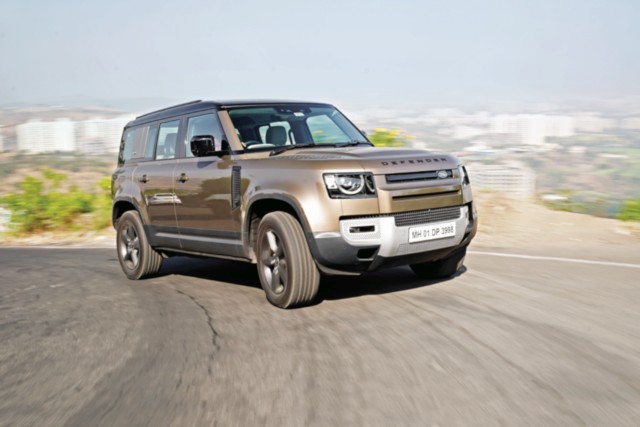
The Land Rover Defender 110 is almost two metres tall and that means there is body-roll in bends; however, it’s far from disconcerting and well-managed. At speed, it flattens the road. The 2.3-tonne weight, 60-profile tyres, and pliant suspension eradicate all road imperfections and the end result is unbelievably good. Noted “off-roaders” were slowing down for ditches and potholes on the way up to the hills, but the Defender would need none of it, with its point-and-shoot style unabashedly evident. Few come close — G-Wagen? Yeah, sure. Wrangler Rubicon. And, perhaps, some trail-spec customs. From where I’m sitting, I feel indomitable. Over paved roads, the Defender feels excellent. It handles fast bends and gradual curves well and even tight bends eventually are taken at decent speed. It just takes a little getting used to the fact that this mammoth can dance.
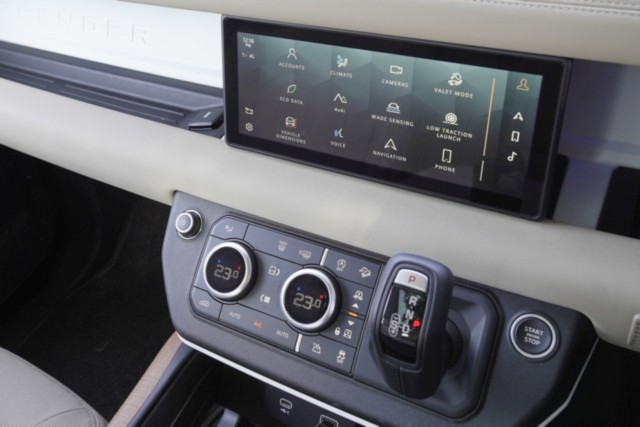
Getting to the rough stuff was a cake walk. The Terrain Response set-up gives loads of choices — Eco, Normal, Sand, Mud and Ruts, and even a Rock mode. “Rock” mode requires 4×4 Low to be engaged and that meant neutral and a touch of a button. A click and a distant thunk later, I was ready to head down the side of the mountain the wrong way. The best part was I was looking forward to it!
Effortless is not the word. The sound of the Good Year Wranglers biting into the dirt as the great Defender and I inched backwards, and at a ridiculous grade, was extremely rewarding to the senses. Shot achieved, it was another hill that beckoned. Onward and upward.
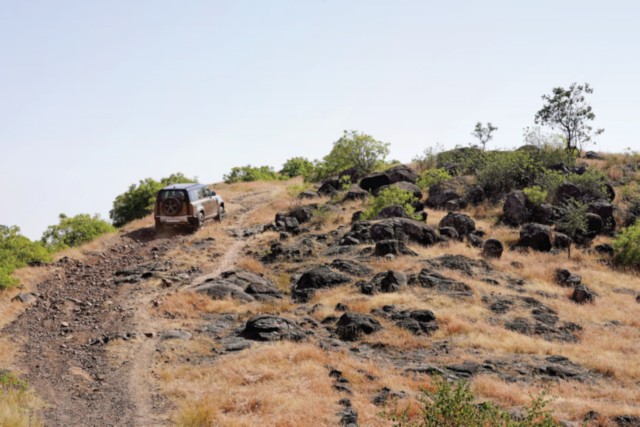
Right, at the base of the dirt, surrounded by untamed rock, the Land Rover Defender appeared to survey its next challenge. Throttle engaged, slowly and consistently, the steering wheel was left free to do its thing as the big Defender proceeded up the 30° incline at 12 km/h, doing 3,500 rpm with the low range gear and transfer case doing their own thing. I was sitting up in my seat but it really didn’t matter. The Defender headed up the rocky passage and on to the hill slowly but surely. After managing to make a U-turn on top of the hill — quite dramatic body angles, but not captured on camera, unfortunately — the All Surface Progress Control took over for the downhill experience. At a steady five km/h or lower, the Defender ambled down the slope; a descent angle and surface most other SUVs would find intimidating. It’s not that the Defender can do these things, it’s how it does them that astounds.
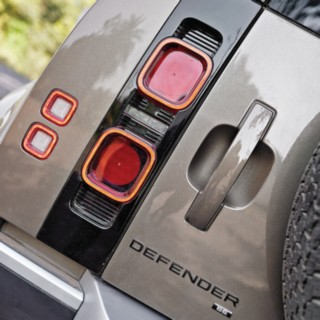
When it comes to tackling all surfaces, beaten or unbeaten, the Defender feels like it can beat them all. Truly a proper fit in the Earth realm of this day and age. It’s got the equipment, connectivity, occupant room, cargo volume, storage spaces, and flexibility of being a two-, four-, five-, six- or seven-seater at the flip of a lever and yank of a loop. It’s easy and manageable and makes for a comfortable and safe environment for family and friends that’s ready for everything. And by everything, I mean the reality of today that’s more challenging than ever. Few cars can do it all. Let alone this well. And there’s a more powerful and efficient plug-in hybrid version coming soon, too.
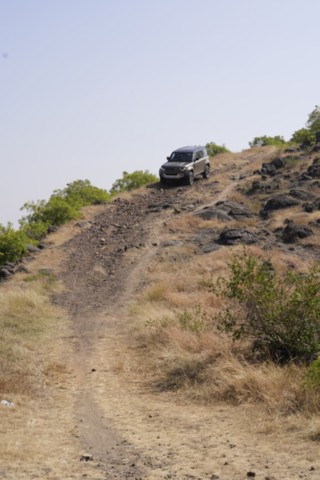
Turn ‘Off’ On
When it seems like land over, the Land Rover Defender is ready. Lift the suspension to its highest ride height and it becomes a serious all-terrain vehicle. Here are the essentials:
Ground Clearance: 291 mm
Approach Angle: 38°
Departure Angle: 40°
Breakover Angle: 28°
Wading Depth: 900 mm
Max Gradient: 45°
Max Side-slope: 45°
Need to Know – Land Rover Defender 110 P300 SE
Price: Rs 86.61 lakh (ex-showroom)
Engine: 1,997 cc, in-line four, turbo-petrol, direct-injection
Max Power: 300 hp @ 5,500 rpm
Max Torque: 400 Nm @ 1,500-4,000 rpm
Transmission: Eight-speed, automatic, all-wheel drive
Suspension: Strut front with twin lower links, integral multi-link axle, air suspension
Weight: 2,305 kg


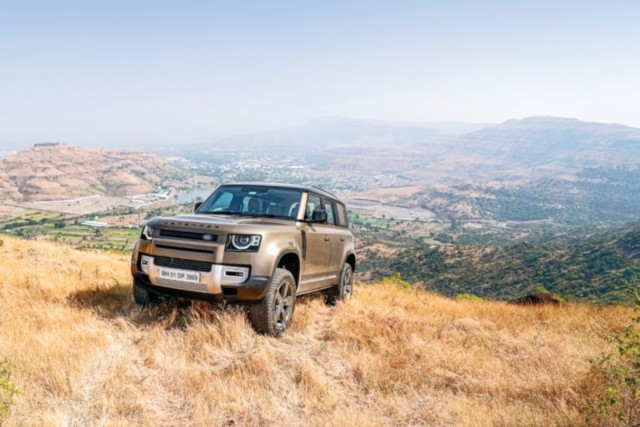


















Leave a Reply